Planning an ergonomic design for a hotel can call for atten-tion to a lot of finer details. Among the design features to be considered is lighting. Selecting an appropriate light-ing scheme to accentuate the intricate features and functionality of the hotel spaces needs careful evaluation.
In a hotel, where every public space serves a multi-functional task — a complex structure with several different areas such as the lobby, kitchen, bathroom, restaurants, suites, needs multiple kinds of lighting at various lumens, sizes and colour temperatures to create an entirely functional atmosphere.
When design meets lighting, new and surprising ideas are fostered. However, creating an exceptional visual and sensorial experience through lighting in the design process can, at times, lead to many unavoidable pitfalls. Market leaders and experts from the industry share the most common missteps that should be avoided while working on the lighting scheme.
Preference for a single type of lighting
While zeroing in on the lighting scheme, “certain designers are very selective or design a space with one kind of lighting, which not just causes inconvenience to the user but also makes the décor of the room look flat,” says Conception Fernandes, Deputy Chief Engineer, Radisson Blu Resort Goa. Fernandes cites an example to explain his viewpoint. According to him, “If only ambient lighting is provided in hotel rooms, it might end up looking like a retail store, an institution or even an industrial area. Thus, it is essential to balance the scheme with other forms of lighting.”
Director of Anusha Technovision Pvt. Ltd, Alok Hada has a similar viewpoint and adds, “When augmenting a lighting scheme for a guest room or any hotel space, it’s imperative to create a balance between ambient lighting and task lighting. It is also imperative to add accent lighting, wherever needed, to introduce a sense of drama in the space.”
Hotels have evolved and so have the spaces within them. As Sandeep Kaushik, Country Head - India & Sri Lanka, Sans Souci points out, “A hotel room is no longer just a room to sleep in. It has multiple functions: it’s also a place where the guests eat, work and relax. The lighting layout of the hotel or its rooms needs to reflect the variety of uses and should also provide the correct lighting levels to meet all those functions.”
Installing lights on a high ceiling
Placing lights at an appropriate height and angle largely impacts the amount of luminance it sheds in that room. In terms of “recessed lighting,” says Fernandes, “putting them on a high ceiling wouldn’t impart the desired results. That is because the light is far from the activity area and isn’t focused enough. It can turn a naturally bright room into a dimly lit dungeon after sunset.” The key to avoiding this mistake, he suggests, lies in dividing the space into three parts, a concept called the ‘Rule of Thirds’. Fernandes also warns against improper positioning and use of lamps that often lead to some corners that are obscured by low light points.
Overlooking prominent spaces
Appropriate lighting in every section of a hotel is of paramount importance. However, certain spaces tend to get overlooked while designing a hotel for both functionality and aesthetics. According to Hada, while a lot of attention is paid to lighting in the lobby and within the restaurants, the corridors are overlooked, with the quality of lighting inconsistent in comparison to the other areas.
Pawan Kumar, Chief Engineer, Novotel Ahmedabad, concurs with Hada’s point of view and contends that hotels spend a lot of resources on enhancing the lobby, whereas other important spaces such as meeting rooms, corridors and elevators are often overlooked.According to Sandeep Kaushik and Mukesh Sharma, Chief Engineer, Crowne Plaza Greater Noida, the most overlooked spaces in a hotel in terms of lighting are the main porch, hallways and the entrance.
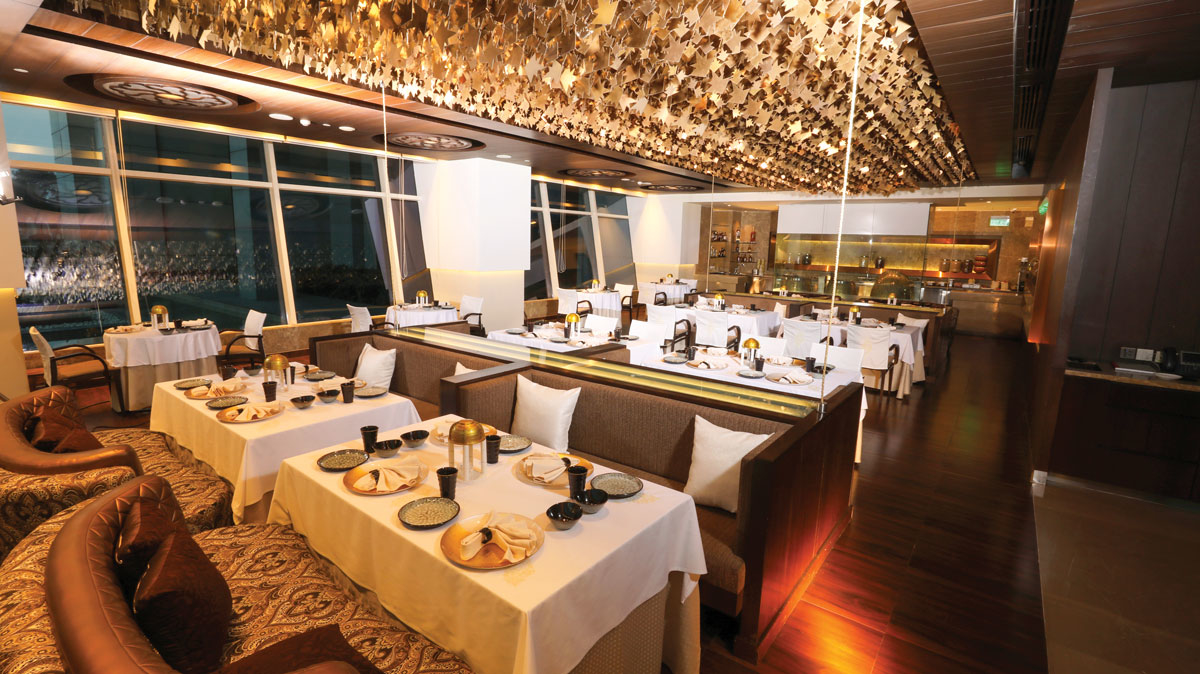
Crowne Plaza Greater Noida's Indian restaurant, Spice Art, has a well-crafted design installation as its central design feature.
“To make the lighting at hallways and corridors look more prominent,” says Raghunath Munde, Assistant Manager Engineering, Fairfield by Marriott Pune Kharadi, “the spaces must have adjusted lights that can make the space looking comforting instead of a tunnel. Guests should feel warm and safe while walking through the corridors.”This doesn’t mean the lobby lighting doesn’t need impactful lighting attention. As Fernandes says, “Although people don’t spend a lot of time in this section, it is an integral part of the hotel, reflects its style and determines how the services are perceived. A lobby should ideally contain contemporary light fixtures that look up-to-date and seamlessly blend with other elements of the hotel décor, such as furniture and flooring.”
Size of the light fixtures
The size of the light fixture is another commonly overlooked aspect. The lighting designer should foremost check whether the lighting and fixtures are proportional to the area and its size; wrong proportions affects both design and function.
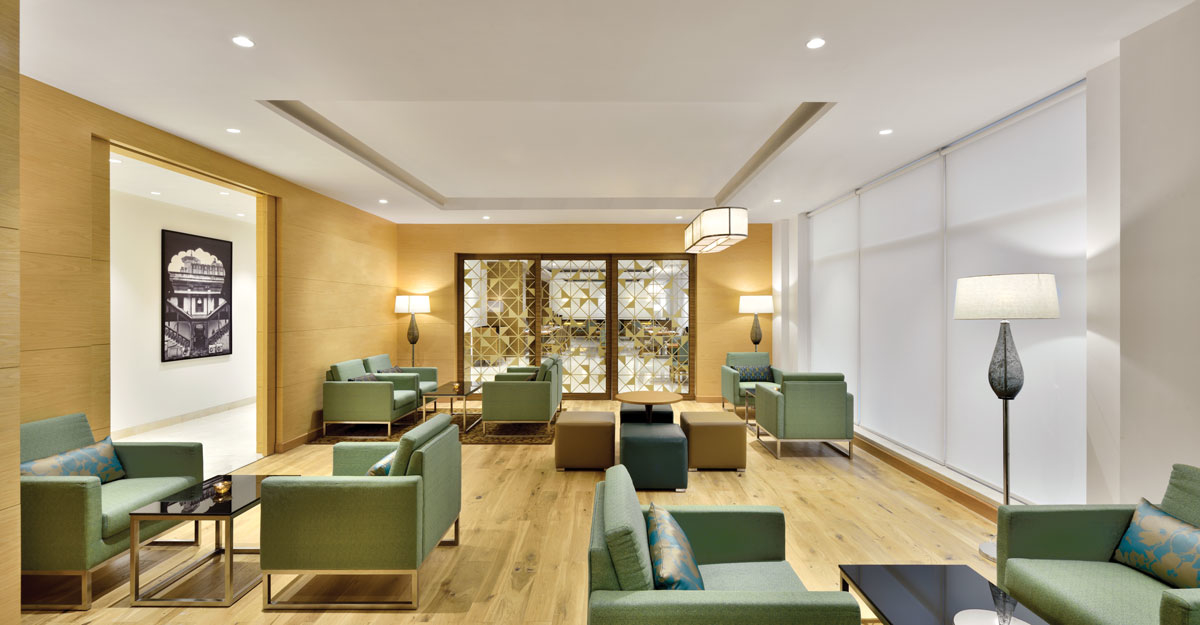
The lighting and fixtures used at Kava kitchen & bar at Fairfield by Marriott Pune Kharadi are proportional to the area and its size.
“Improper sizing can largely impact the brightness of the area, especially if you choose a fixture that is too small to light up the whole space. Both design and functionality should be considered when determining the size of the fixtures,” says Munde.
Undermining the importance of task lighting
Task lighting plays a very important role while designing a space. “It helps to put the focus attention on certain chosen areas and one of the classic examples is the kitchen in a hotel.
Task lighting helps to avoid shadows and mishaps. The ideal way to make the most of comthis kind of lighting is to place them on the kitchen countertops or track lights pointed in a different direction, which will help you achieve a focused source of lights,” explains Fernandes.
In sync with times
The installed product brand and model of lighting should not be out of date or near-to-expiry product. “In the age of LED lightings, some project companies continue to install CFL and incandescent lights, which are high power consuming. Sometimes we end up installing the fixtures for which the production has already stopped. This often leads to unavailability of the product in the market after some days and apparently, it results in replacement of the lighting fixture with an updated one,” states Mukesh Sharma, Chief Engineer, Crowne Plaza Greater Noida. Further, the designer should ensure that “the installed system is user-friendly. There is a possibility that the end-user may be a non-technical person and the new system should provide the guest with ease of use and full safety”.
Ignoring lamp specifications
Not checking the specification of a lamp is a common mistake. “It is essential for the designer to consider the life of the lamp. They should also think about what may be the difficulties encountered if the lamps have to be replaced. Also, one should consider whether group replacement of is a better choice economically,” opines Fernandes.
While selecting a new fixture, attention should be paid to its colour and appearance. “Although all lamps produce white light, their CCT and CRIs differ. Besides, auxiliary equipment required along with the lamps should also be questioned. One should check for the types of ballast used as it can affect lamp output life, starting reli-ability, system efficiency and occupant comfort,” adds Fernandes. Designers also need to keep in mind other miscellaneous, such as room temperature and whether that needs to be free of any stroboscopic effects or electromagnetic interference, which could disturb the activities in the space.
The colour of light and its impact
A hotel room’s overall colour scheme can create distinct moods, and lighting can either emphasise or detract from them. “The colour of the light plays a crucial role to elevate a room’s ambience and has a direct impact on a guest’s safety and health. So, it should be selected very judiciously,” says Vinod Kumar, Chief Engineer, The Leela Palace New Delhi. He suggests that warm colours should be used in the line of the guest’s health and safety.
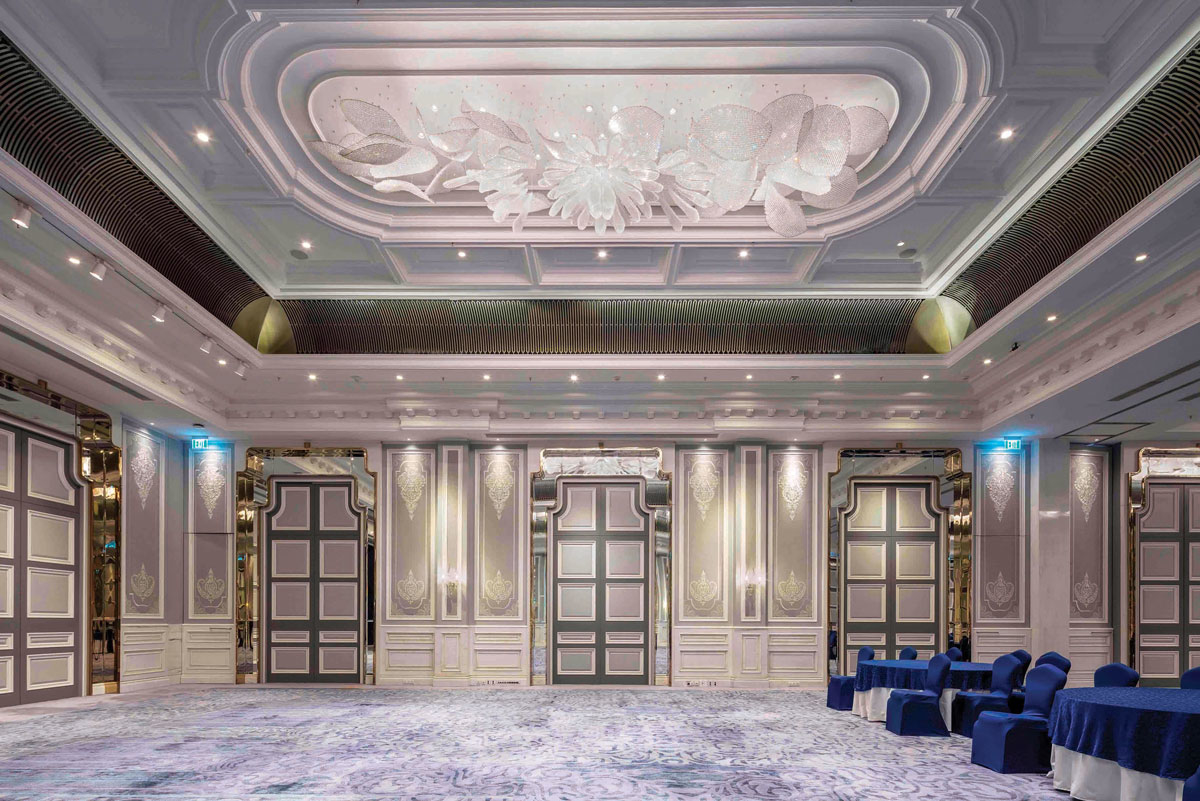
The extravagant chandelier at Ritz Carlton Pune, placed at an appropriate height and angle, effectively blends with other forms of lighting in the scheme.
Hada highlights the fact that there is a significant link between light and our circadian rhythms, which determines our sleep cycle, relaxation and stimulation. Lighting is also said to decrease depression or improve our energy, mood, alertness and productivity. Different lighting tones can cause different effects. For instance, white lights tend to boost productivity and decrease sleep-inducing hormones, whereas yellow lights create a sense of relaxation and comfort. Thus, it becomes essential for designers to gain know-how of colours of the light and their impact.
Bright bathroom/vanity areas
Some amount of brightness is required in these areas, but too much of it can prove to be a design disaster, aesthetically as well as functionally.
“Ceiling lights in a bath-room tend to create shadows while you are close to a bathroom mirror. This could cause a problem while you are applying make-up, tweezing or shaving”, points out Fernandes. To correct this, he suggests that the lights should be installed at eye level, ensuring that no shadows get cast.
Brand standard and certification
The lighting layout should meet all the requirements of brand standards. “If the layout is made without studying the requirements of the standards, then there is a possibility of modifying it later, which only adds to the expenses,” says Sharma.“Apart from adhering to brand standards and taking into account the brand philosophy, equal emphasis should be laid on the energy the light would consume and the returns on investment,” adds Pawan Kumar.
Lack of natural light
Gone are the days of hotel conferences when you would see no daylight within dimly lit interiors. “Now, no daylight equals to no booking. Where possible, natural light should always be incorporated into plans,” says Fernandes.
“While lack of natural light can be a hindrance,” adds Kaushik, “it can be resolved by manipulating adequate artificial lighting to achieve the required lighting outcome.” The light can be increased or decreased, directed, focused and coloured. This allows lighting to create a range of effects according to the require-ments of the space if there is a lesser scope of natural light.Another technique that can be applied to a space with natural low light/rooms without windows is the introduction of the fake window.
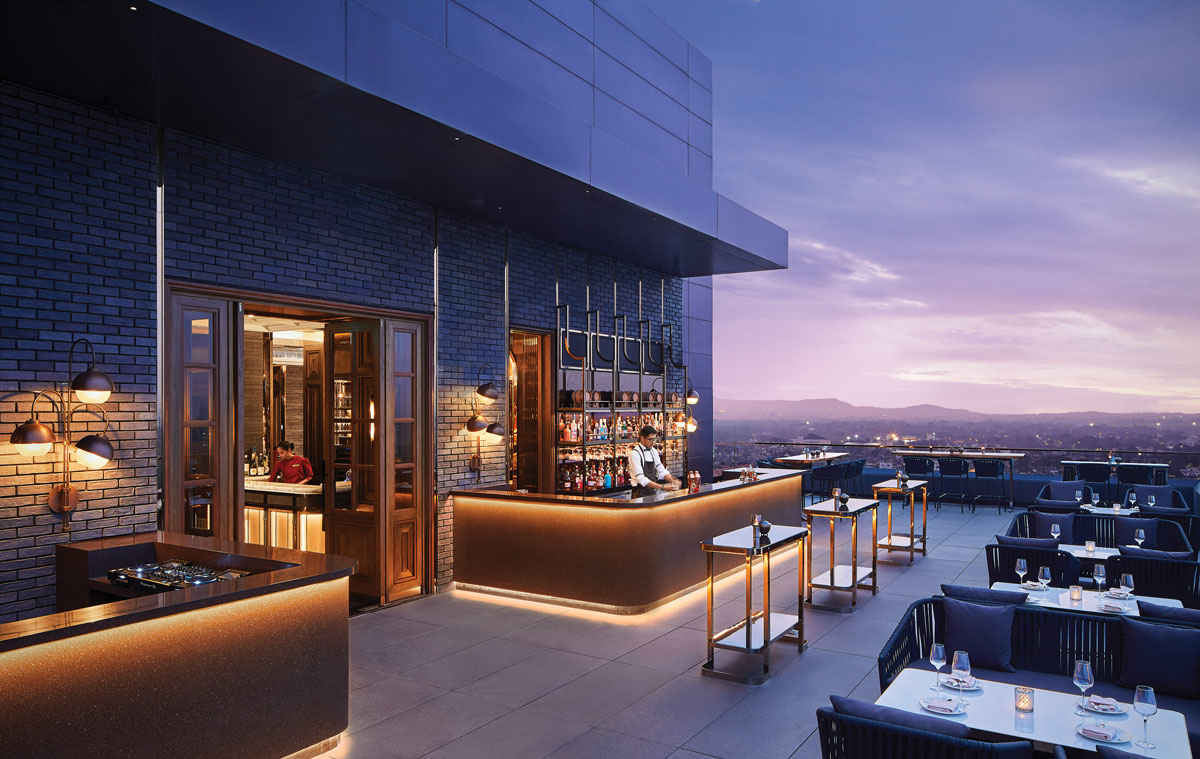
Lighting level can help hotels save energy by having proper selection of lamps that provide adequate lumen in all areas.
Kaushik says, “A high-resolution image that works with LED lighting offers the closest result to a real window, thus infusing basement apartments, walls without windows or any indoor areas a real natural light.”Skylights placed in strategic positions can also contribute majorly to energy efficiency and comfort, and can be installed in both existing and newly constructed spaces. They are an excellent source of natural light: they can emit more than three times as much light as a vertical window of the same size, distributing it evenly, saving energy and improving visual comfort levels.
Insufficient lighting level
Insufficient light can be uncomfortable and unsafe. According to Hada, “Too much light can cause a glare, leading to headaches or eye strain. Too much artificial lighting wastes energy. Effective light-ing levels can help determine what space needs how much light and create a proper scheme that blends into that space, embellishing it in all the right ways.”
The lighting of an area has its science and the luminous flux level measures the intensity of light that can be perceived by human eye. Proper know-how is a must. Earlier, “it was common to use light levels in the range 100-300 lux for normal ac-tivities. Today, the light level is more common in the range 500 -1000 lux —depending on the activity. For pre-cision and detailed works, the light level may even approach 1500-2000 lux,” highlights Kaushik.
Regular maintenance of lights
Many hotels install highly sophisticated glass fixtures for lighting décor. They might break easily while cleaning, which makes it difficult for the operating team. Maintenance of glass fixtures on high ceilings and complex designs of chandeliers can be a task. Aesthetics are important, but maintenance has to be consid-ered while installation, says Pawan Kumar.
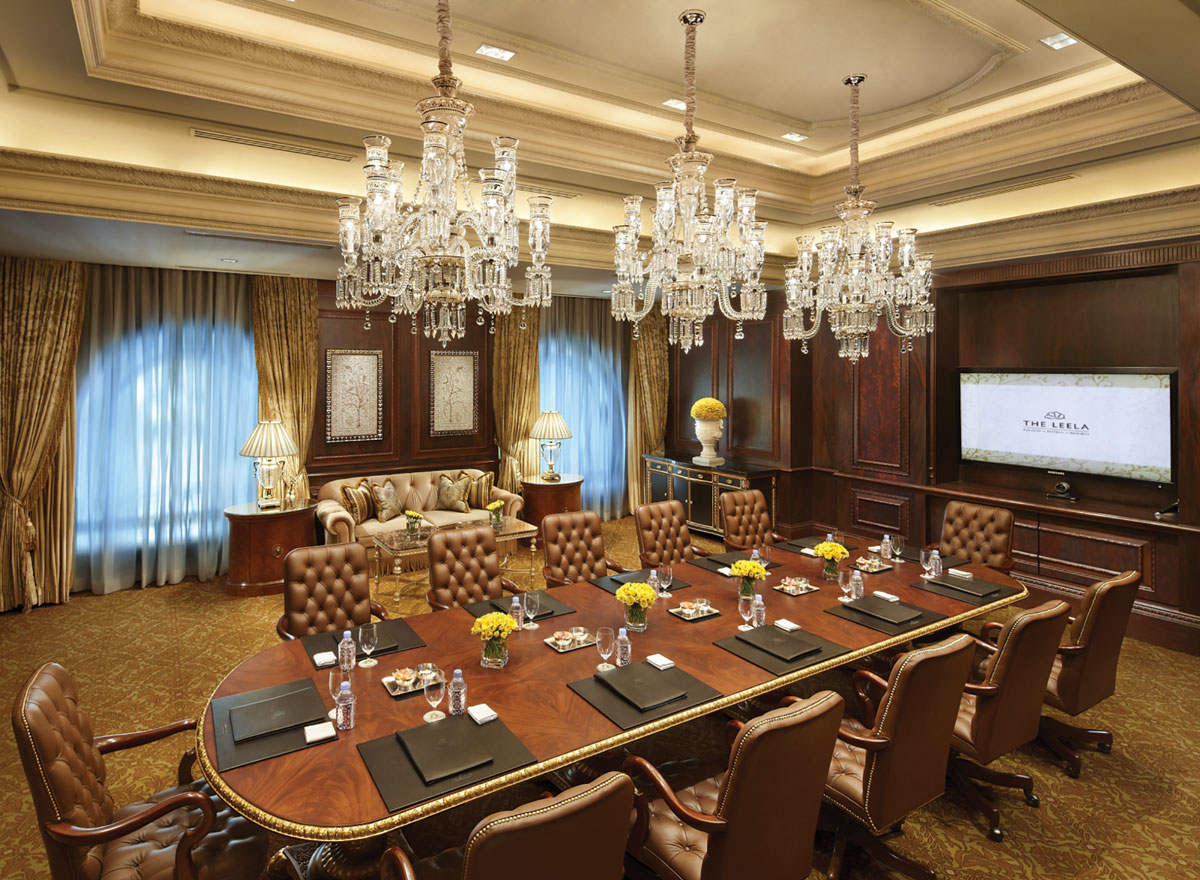
The Chairman's boardroom at The Leela Palace New Delhi houses intricate chandeliers, which are easy to reach and maintain. The installation of chandeliers should be done with the provision of periodic maintenance.
Sharma says that the instal should be done with the provision of periodic maintenance. “Installing light in confined spaces makes it difficult to access when it has to be repaired/ replaced. High-ceiling chandeliers should be fixed to a chain-and-pulley structure so they can be pulled down for maintenance.”
Certain lighting scheme in a hotel requires skilled personnel for maintenance. Vinod Kumar and Sharma highlight that some properties have installed dimmer panels, which are programmed by a PLC engineer during installation. However, a programming person cannot always be present on-site, which makes repairs and maintenance complicated for the selected scheme.
Technical flaws
Improper selection of dimmer switch: “Dimmer switches help you conserve light bulbs longer, by reducing the stress put on incan-descent and halogen bulb filaments. They help make a room look more inviting and relaxing, while improving your sleep cycles during bedtime,” contends Fernandes.While most add to the ambience, they certainly come with their own set of disadvantages. According to Sharma, “The programming of dimmers contains errors, which start creating issues from within a week or two of the installation and needs coordination with the light company to resolve. However, it has been found that the error persists.”
User-friendly control system: Sharma contends that the control of lights has to be made easier for the end-user. “We cannot always depend on a technical person to control the lights and modify them, as per a guest’s needs. So the design should not be very complicated.” Guests often complain about poor vanity and reading lights. This issue can be re-solved with an easy one-stop automation control panel for the bathroom, closet, bedside and vanity mirror lighting. “A single control panel will help guests unwind into a relaxing environment,” he adds.
A hotel’s desire to create the right ambience and lighting is a central focus of the design. New advances in LED lighting make it possible to completely change the look and feel of a hotel room, with just a change of lights.

